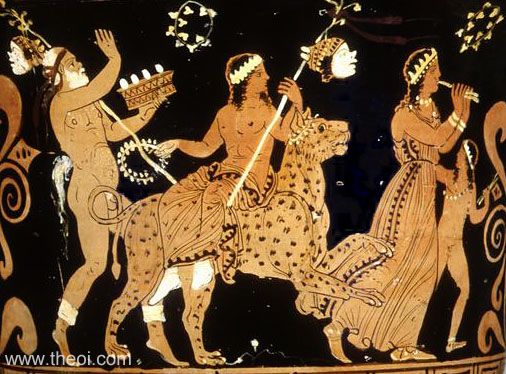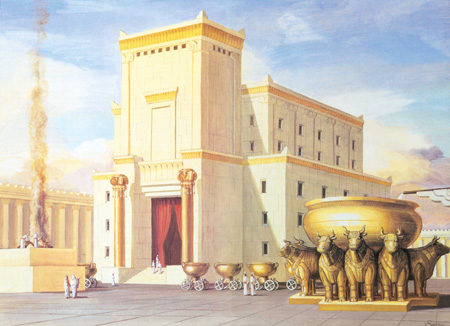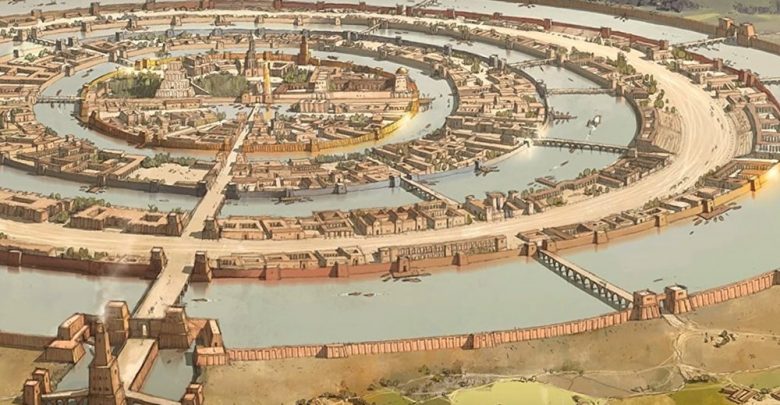We discussed briefly, in Part 1, the text of the book, “The Sketch of the History of the Dionysian Artificers,” by Hippolyto Da Costa. The book, written in 1820, is the author’s take on where Freemasonry originated, and what the “guts” of Freemasonry’s teachings are about. However, no where in the text does Da Costa state this is about Freemasonry nor does he use the term Freemasons. What is this text attempting to say, and why should Freemasons care?
Let’s return to the myth of Dionysus. According to Mackey’s “The Symbolism of Freemasonry,” there were two myths of Dionysus and the one particularly noted to Freemasonry and the Dionysian Artificers is the one which involves the Titans. Dionysus had two births, according to some, including the Greek poet Nonnus, who has provided the account of his first birth and death. From Wikipedia…
“The Greek poet Nonnus gives a birth narrative for Dionysus in his late 4th or early 5th century AD epic Dionysiaca. In it, he described how Zeus “intended to make a new Dionysos grow up, a bullshaped copy of the older Dionysos” who was the Egyptian god Osiris. (Dionysiaca 4).
Zeus took the shape of a serpent (“drakon“), and “ravished the maidenhood of unwedded Persephoneia.” According to Nonnus, though Persephone was “the consort of the blackrobed king of the underworld”, she remained a virgin, and had been hidden in a cave by her mother to avoid the many gods who were her suitors, because “all that dwelt in Olympos were bewitched by this one girl, rivals in love for the marriageable maid.” (Dionysiaca 5)[162] After her union with Zeus, Perseophone’s womb “swelled with living fruit”, and she gave birth to a horned baby, named Zagreus. Zagreus, despite his infancy, was able to climb onto the throne of Zeus and brandish his lightning bolts, marking him a Zeus’ heir. Hera saw this and alerted the Titans, who smeared their faces with chalk and ambushed the infant Zagreus “while he contemplated his changeling countenance reflected in a mirror…”
However, according to Nonnus, “where his limbs had been cut piecemeal by the Titan steel, the end of his life was the beginning of a new life as Dionysos.” He began to change into many different forms in which he returned the attack, including Zeus, Kronos, a baby, and “a mad youth with the flower of the first down marking his rounded chin with black.” He then transformed into several animals to attack the assembled Titans, including a lion, a wild horse, a horned serpent, a tiger, and, finally, a bull. Hera intervened, killing the bull with a shout, and the Titans finally slaughtered him and cut him into pieces. Zeus attacked the Titans and had them imprisoned in Tartaros. This caused the mother of the Titans, Gaia, to suffer, and her symptoms were seen across the whole world, resulting in fires and floods, and boiling seas. Zeus took pity on her, and in order to cool down the burning land, he caused great rains to flood the world (Dionysiaca 6).”
Wikipedia: Dionysis
The first dating of Dionysus comes from approximately 13th Century BCE in Thrace, possibly migrated from Ionia. Mackey discusses in his chapter, “The Dionysiac (sic) Artificers,” how the rites of Dionysus, as it relates to the first death of Dionysus are nearly ubiquitous throughout the ancient world and how, over time, they have morphed into several rites which we are also familiar with – those of Osiris, Orpheus, and Mithras. After reading the passage above, it is hard not to see the connections in the death and symbolism connecting them together.
In one version of the myth, the events described above are directly attributed to Isis, Horus, and Osiris, with Horus taking the place of the Titans. From some sources, it is speculated that Dionysus was the only foreign God to be accepted into the Greek pantheon, and that many believe this myth of Dionysus to be the source of all other mystery schools. What is fascinating is we have a 4th or 5th Century CE author, Nonnus, writing about a God that has been in human consciousness for nearly 2000 years, at the very least.

What does this have to do with Freemasonry? Much, if you take Da Costa’s take. From Pgs 5 and 6 of the “Dionysian Artificers,” we read:
Amongst those mysteries are peculiarly remarkable the Eleusinian. Dionysius, Bacchus, Orisis, Adonis, Thamuz, Apollo, etc., were names adopted in various languages, and in several countries, to designate the Divinity, who was the object of those ceremonies, and it is generally admitted that the sun was meant by these several denominations.
Let us begin with a fact, not disputed, that in these ceremonies, a death and resurrection was represented, and that the interval between death and resurrection was sometimes three days, sometimes fifteen days.
Now, by the concurrent testimony of all ancient authors the deities called Osiris, Adonis, Bacchus, etc. were names given to, or types, representing the sun, considered in different situations, and contemplated under various points of view.
Therefore, these symbolic representations, which described the sun as dead, that is to say, hidden for three days under the horizon, must have originated in a climate, where the sun, when in the lower hemisphere, is, at a certain season of the year, concealed for three days from the view of the inhabitants.
(sacred-texts.com: Dionysian Artificers)
The conjecture that the worship of the sun came from a climate (Persia, for example, Mithraic Rites) is, in Da Costa’s view, erroneous. The worship of the sun came from the northern-most climates, and thus came from Atlantis, as documented by Plato and, according to him, Socrates. While the origin of the Sun Worshiping rites is still open to debate in Da Costa’s work, he emphasizes that the numbers, in accordance with the Order of Nature, are important and that the mysteries themselves are teaching their initiates about the cycle of life and death. If we are to believe that these mysteries came from Atlantis, then the one common language that could have been passed through the ages is numbers and symbols, as expressed through the laws of nature which all Earth inhabitants share.
Da Costa continues to trace the lineage of the mystery schools through the modern day, including how the worship of the Sun and Dionysian Rites in particular became associated with the art of building and architecture. From the book, again, pages 30-32:
About fifty years before the building of the Temple of Solomon in Jerusalem, a colony of Grecians, chiefly Ionians, complaining of the narrow limits of their country, in an increased population, emigrated; and having been settled in Asia Minor, gave to that country the name of Ionia.
No doubt that people carried with them their manners, sciences, and religion; and the mysteries of Eleusis among the rest. Accordingly we find that one of their cities, Byblos, was famed for the worship of Apollo, as Apollonia had been with their ancestors.
These Ionians, participating in the improved state of civilization in which their mother country, Greece, then was, cultivated the sciences, and useful arts; but made themselves most conspicuous in architecture, and invented or improved the order called by their own name Ionian.
These Ionians formed a society, whose purpose was to employ themselves in erecting buildings. The general assembly of the society, was first held at Theos; but afterwards, in consequence of some civil commotions, passed to Lebedos.
This sect or society was now called the Dionysian Artificers, as Bacchus was supposed to be the inventor of building theatres; and they performed the Dionysian festivities. They afterwards extended themselves to Syria, Persia, and India.
From this period, the Science of Astronomy which had given rise to the symbols of the Dionysian rites, became connected with types taken from the art of building.
(sacred-texts.com: Dionysian Artificers)

As the migration of the Artificers coincided with the building of the Temple of Jerusalem, Da Costa speculates that the building afforded a new way to communicate the mysteries, and thus tied together the mysteries of ancients with a legend of Hiram Abiff. Additionally, Da Costa alludes to the idea that the Artificers might have had a hand in building or advising on the Temple’s completion. He states that the Temple represents the “Universal System of Nature.” In other words, the study of the Temple’s actual layout may symbolize the whole of the cosmos in the Hermetic principle of correspondence: “As Above, So Below.”
Da Costa concludes his paper very quickly and simply: With the advent of religions, and science, the ideas of the ancients faded into obscurity.
In the tenth century, during the wars of the crusades, some societies were instituted in Palestine, and Europe, which adopted some regulations resembling those of the ancient fraternities. But is was in England, and chiefly in Scotland, where the remains of the old system, identified with that of the Dionysian Artificers, were discovered in modern times.
sacred-texts.com: Dionysian Artificers
Again, without discussing Freemasonry, Da Costa specifically calls out Freemasonry as a repository of the Dionysian Artificers and any student of modern Freemasonry would recognize many of the hallmarks of the mystery schools. In many places, and some even to modernity, regard these ancient mystery schools as heresy, atheism, or paganistic idolatry. A fascinating read, to accompany reading the Dionysian Artificers, is a section from the Theosophical Society’s website, entitled “Part 1 – The Mystery Schools” from the book “The Mystery Schools,” by Grace F. Knoche (Second Edition: 1999). While this is, of course, a decidedly Theosophical take on the origin and meaning of Mystery Schools, it can give the reader a very different view from the propaganda that has been surfaced through the ages and has influenced our modern thinking about Mystery Schools.

My take is, that in short, the Dionysian Artificers were and are those who are working to keep the venerable Mysteries alive; this is ancient knowledge passed down to us to use to live and to prepare for our own deaths. It’s knowledge of the world we are a part of, and if we listen closely can affect us in profound ways. Nature teaches us to live but more importantly, She teaches us to move through life to our inevitable destiny, and beyond. The stories repeated by the Artificers are not necessarily meant to provide profound enlightenment and help us all transcend to a perfect heaven or afterlife. The Artificers are those who work to continue the refinement of the human species and, over time, help us to move in concert with Nature & Science, and be the best version of Humanity. If that is the goal of the Artificers, perfecting humanity, then it seems that Freemasons are the modern Artificers, just as Da Costa, 100+ years ago, theorized.
Categories: Esotericism, History, Literature



S’il vous plaît je ne comprend pas l’anglais je veut des textes en français Le 19 août 2019 03:48, “MASONIC PHILOSOPHICAL SOCIETY” a écrit :
> Kristine Wilson-Slack posted: ” We discussed briefly, in Part 1, the text > of the book, “The Sketch of the History of the Dionysian Artificers,” by > Hippolyto Da Costa. The book, written in 1820, is the author’s take on > where Freemasonry originated, and what the “guts” of Freemasonry’s t” >
LikeLike
Bonjour Monsieur,
Vous ne devriez pas avoir le problème de langue, il a un groupe Francophone.
Contacter Mr. Dennis il vous aidera.
LikeLike
Hello i need knowledge
LikeLike
COMMUNICATION WITH OUR PHYSICAL BODY :
I participated in one of our African Group meetings and one participant was concerned about taking in Coffee. Another Participants tried to discourage him about Coffee consumption but the Guy insisted and was told to continue with his Coffee consumption.
I am also a Coffee consumer, but to me I always prefer my personal experience than external instructions, so I said nothing about the subject. But my body answered the question for me two days ago. I noticed that I find it more difficult to control my emotions when I am consuming Coffee.
Most of us are still having issues with emotional control and I observed listening to my body that it would make my tasks more difficult if I don’t stop Coffee consumption.
This also has taught me a lesson that we have to listen to our physical body very attentively, it has much to teach us.
LikeLike